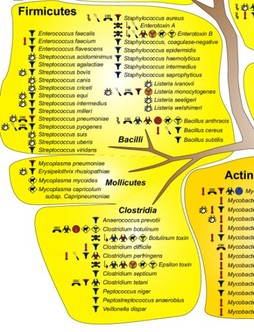
 The largest group of bacteria but somewhat less diverse than the proteobacteria. Firmicutes play an important role in beer, wine, and cider spoilage and are present in greater numbers in obese individuals (vs Bacteroidetes). The group is typically divided into the Clostridia, which are anaerobic, the Bacilli, which are obligate or facultative aerobes, and the Mollicutes. It contains approximately 2475 species, 40% of which are aggregated in just 6 genera; Lactobacillus - 100 sp., Mycoplasma - 110 sp., Bacillus - 114 sp, Clostridium 146 sp and Streptomyces 509. The Firmicutes are all gram-positive bacteria unlike the Proteobacteria which are gram-negative. The Firmicutes are further divided according to their GC ratios. This is the ratio of Guanine and Cytosine to Guanine, Cytosine, Adenine and Thymine in the cell, thus a GC ratio = G+C divided by G+C+A+T times 100. Fermicutes are either High GC or Low GC. Each of these categories contains 3 major groups.
Comments
 meat of a cold-blooded animal living wholly in water, breathing with gills, usually with fins and scales. Fish can be part of a healthy diet providing important nutrients, including omega-3 fats, but it may also contain unhealthy chemicals, like mercury. 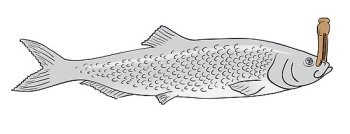 pungent odor such as of ocean fish, decomposing river fish or aquarium tanks in need of cleaning. This smell comes from derivatives of ammonia such as trimethylamine (TMA) that is created when trimethylamine oxide (TMAO, an osmolyte found in saltwater fish) is exposed to air. Odorous TMA is produced by microbes such as ocean-dwelling bacteria. Individuals suffering from Trimethylaminuria (TMAU) have malfunctioning enzyme flavin containing monooxygenase 3 (FMO3; 136132) and are unable to efficiently convert choline-derived trimethylamine into trimethylamine oxide. Trimethylamine then accumulates and is released in sweat, urine, and breath, giving off a strong fishy odor. Dimethylglycinuria or dimethylglycinemia is another condition responsible for rotten fish odor. It happens when another enzyme processing choline - Dimethylglycine dehydrogenase (DMGDH; EC 1.5.99.2) - is not properly functioning. Dimethylglycinuria leads to increased production of dimethylglycine (DMG) in blood and urine, but this metabolite does not seem to be the source of the odor. One of the symptoms of infectious disease Cholera is "rice-water stool" diarrhea that smells "fishy." 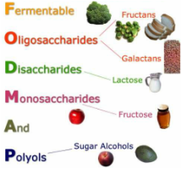
Fermentable Oligo-, Di- and Mono-saccharides and polyhydric alcohols poorly absorbed in the small intestine. Include Fructose, Lactose, Fructan & otherFructooligosacharides, Galactooligosaccharides and Polyols.
FODMAPs contribute to "Functional gut" symptoms (bloating, wind, abdominal distension, discomfort, pain, altered bowel habits). With Fructose intolerance, symptoms peak after about 90 mins, with inulin sensitivity, symptoms peak after about 4 hours of eating. Low FODMAP diet has been shown to help sufferers of Irritable Bowel Syndrome (IBS), small intestinal bacterial overgrowth (SIBO), Irritable Bowel Disease (IBD: Crohn's, ulcerative colitis), celiac disease, fructose malabsorption, and patients with colectomy. High FODMAP foods include apples, apricots, asparagus, beans, cashews, dates, garlic, milk, onions, peaches, pears, pistachios, plums, rye, wheat. 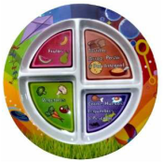 any substance that can be metabolized and converted into energy and body tissue. Nutrition guides usually divide food into groups such as grains (sometimes including beans and legumes, potatoes and other starches), vegetables, fruit, dairy (milk products that could be grouped with milk substitutes such as soy, almond, cashew, coconut, rice and hemp milk), meat and sweets (also called confections or sugary foods and sometimes categorized with fats and oils). Other groups are water and alcohol - Italy's nutrition guide includes a half-serving of wine and beer per day. 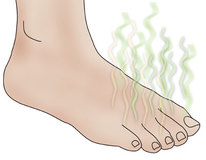 a type of body odor, unpleasant smell of feet, often described as sour ammonia-, vinegar-like or cheesy smell. It is triggered by sweating that promotes bacterial growth and metabolism. Shoes and socks with inadequate air ventilation and toe hair can contribute to bacterial growth as can excessive sweating. Methanethiol (also known as methyl mercaptan) that has the odor of rotting cabbage, is one of the volatile chemicals contributing to foot odor. Propanoic acid smells pungent, sour and rancid. Isovaleric acid (3-methyl butanoic acid) is the other source of foot odor and is a result of actions of the bacteria Staphylococcus epidermidis which are also present in several strong cheese types. Its odor is cheesy, rancid and fermented. Hydrogen sulfide (found as a major component of the volatiles emitted during popping of popcorn) could contribute to burnt popcorn odor in some cases. Other implicated micro-organisms include Micrococcaceae, Corynebacterium and Pityrosporum. Brevibacterium, Propionibacterium, Staphylococcus epidermidis. Staphylococci are most often dominant on the sole and dorsal surface of the feet whereas aerobic coryneforms predominate in the majority of fourth toe clefts. The feet of diabetic men have decreased populations of Staphylococcus species, increased populations of Staphylococcus aureus, Pseudomonas aeruginosa, Proteus mirabilis and Bacteroides fragilis, and increased bacterial diversity, compared with the feet of controls. These ecologic changes may affect the risk for wound infections. The skin surface pH is significantly higher on the sole than on the dorsal surface (top of the foot).  a colorless pungent gas (smell ranges from resembling of pickles to cloying to sickening and suffocating) mainly used in the production of industrial resins, e.g., for particle board and coatings for walls, cabinets and other furniture, in the manufacture of pesticides and disinfectants. It is the simplest aldehyde with formula CH2O , made by oxidizing methanol, and is also known by its systematic name methanal. In view of its widespread use, toxicity, and volatility, formaldehyde is a significant consideration for human health. Most industrial emissions of formaldehyde -- 42% -- are from the lumber industry, which uses adhesives containing formaldehyde to make plywood. Formaldehyde has been linked to lung cancer, and may also cause leukemia and asthma attacks. Diesel emissions also contribute to formaldehyde pollution, and NRDC's ongoing work to clean up diesel is having an important impact. To minimize formaldehyde exposures at home, make sure any wood furniture or fixtures that use particleboard are laminated or otherwise coated, choose exterior- rather than interior-grade pressed wood products for remodeling and be sure that areas where you are using products containing formaldehyde are well ventilated. Formaldehyde can be detected in human breath and, like "breathalyzer" test, is a reliable indicator of formaldehyde levels in blood. It can be also detected in urine. In an older study (Berthold Moser, et al., Respiratory Physiology & Neurobiology, Vol. 145, Issues 2-3, February 2005), the median level of formaldehyde in human breath was 4.3 parts per billion (ppb) with levels of 6.3 ppb, 40 ppb and 73 ppb of the 75th, 97.5th and maximum percentiles, respectively. 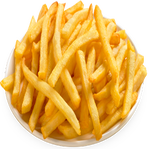 Potatoes cut into strips and deep-fried. Also called french-fried potatoes. Frenched means to be cut into strips. Deep-fried implies that an amount of fat or oil was sufficient to cover it completely. Calories and health effects depend on the amount of salt added, cooking technique (par-frying, for example, is blanching or half-frying that will need additional cooking before serving), and types of fat used. Calories per serving could double or triple depending on that. 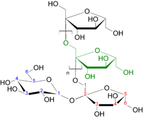 polymers of fructose naturally produced by 15% of flowering plant species, consist of inulin (prebiotic), inulo-n-oses, and other selected vegetable fibers. Some species such as artichoke (Cynara scolymus) and globe thistle (Echinops ritro) store fructans with a considerably higher degree of polymerization than the one observed in chicory (Cichorium intybus) and Jerusalem artichoke (Helianthus tuberosus). Fructans are a type of FODMAPs. |
Categories
All
|

